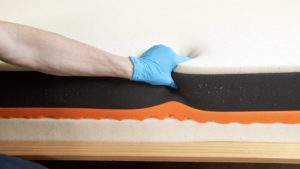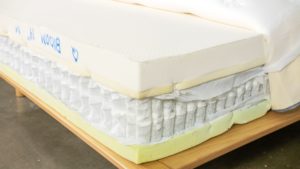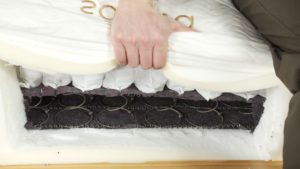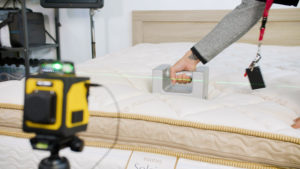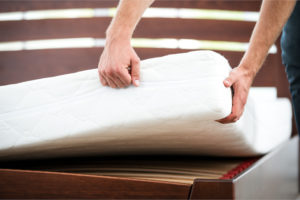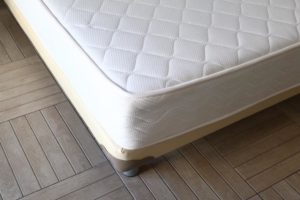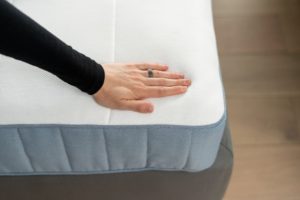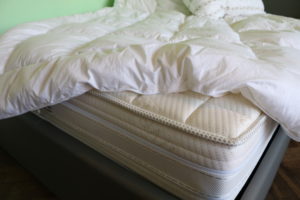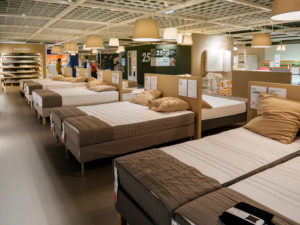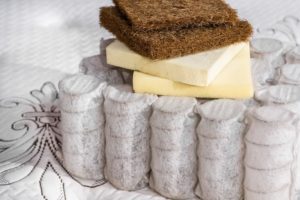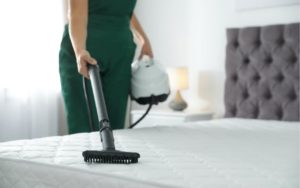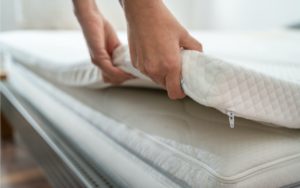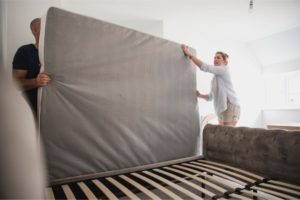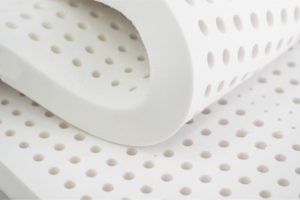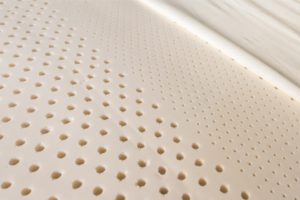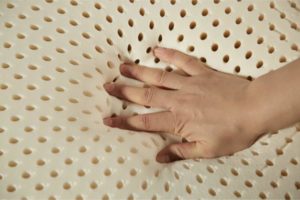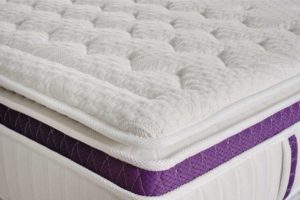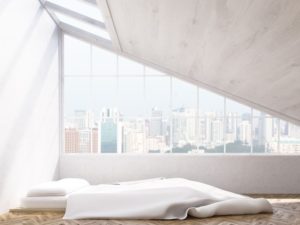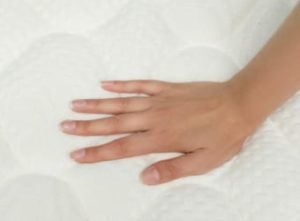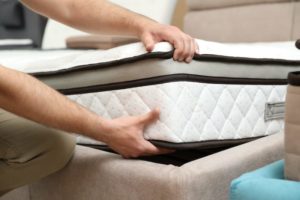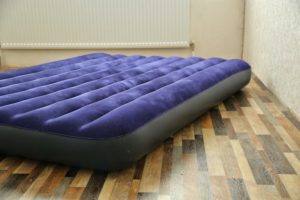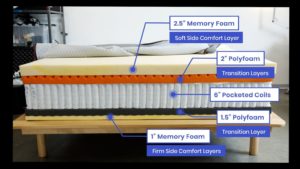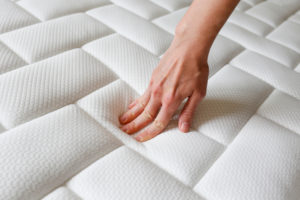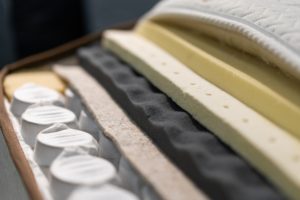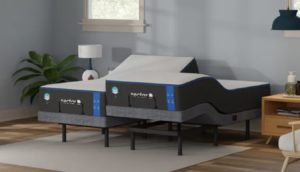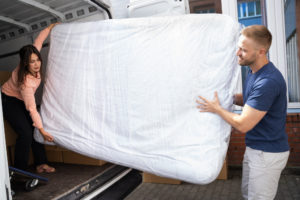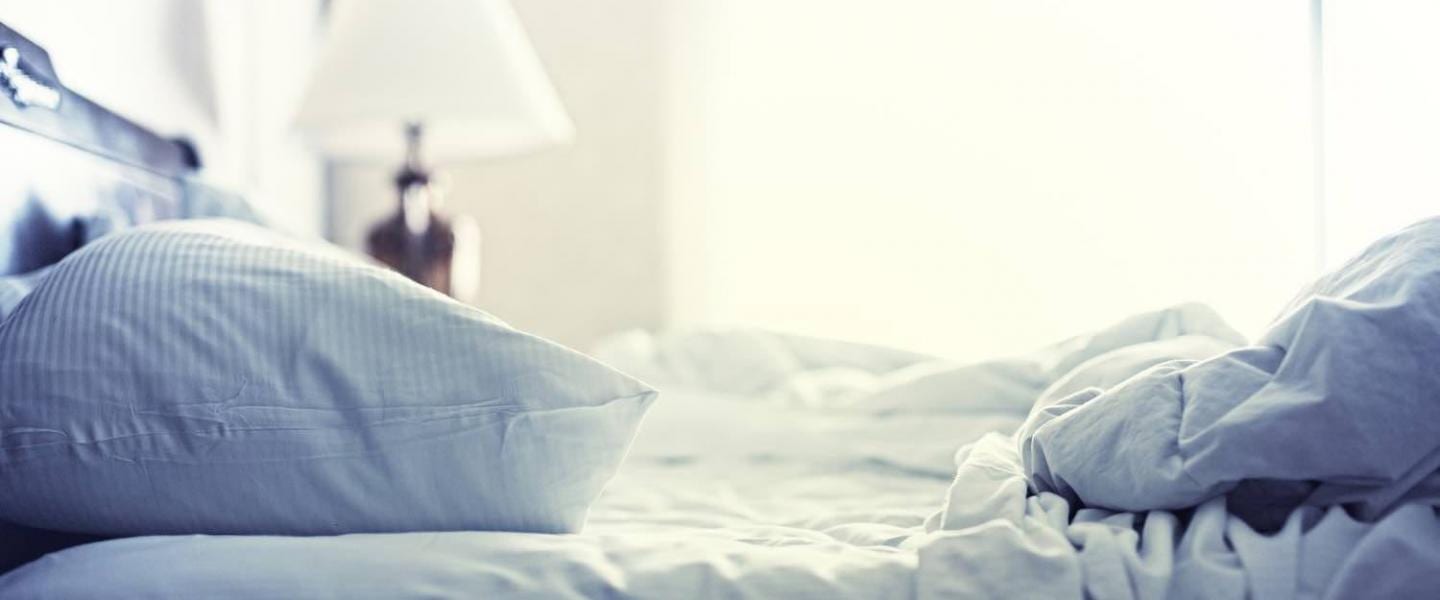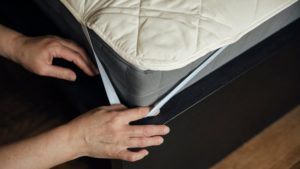When you buy through our links, we may earn a commission. Products or services may be offered by an affiliated entity. Learn more.
How to Make Your Bed More Comfortable
- Selecting the right mattress for your needs and preferences
- Adding a mattress topper
- Choosing cozy and higher-quality bedding
- Using a proper foundation with your mattress
- Decorating with aesthetically pleasing pillows and blankets that make your bed more welcoming
Your bed should be your sanctuary. It should be inviting, relaxing, and comfortable. Each night, it should be simple to get cozy so that you can sleep for the recommended seven or more hours. If you have a hard time settling in when bedtime rolls around, it may be time to make your bed more comfortable so you can fall asleep more quickly, get deeper sleep, and stay asleep longer.
Let us help you find the perfect bed
Answer a few questions to find the right mattress for your unique needs
Are You Sleeping On the Right Mattress?
Your mattress plays a pivotal role in your bed’s comfort level. The wrong mattress can cause discomfort and difficulty sleeping. On the other hand, the right mattress can offer several benefits, including improved support and more restorative sleep.
The best mattress choice varies based on a number of factors including body weight, sleeping position, and personal comfort preferences. For instance, some people may like a firmer or softer bed or prefer the feel of a specific type of material.
One way to make your bed more comfortable is to get a new mattress. If you’re thinking about a mattress upgrade, consider mattress type, firmness level, your sleeping position, and your body type as each of these factors can help you narrow down your options and hone in on your optimal mattress.
Mattress Type
Although there are many mattresses on the market, almost all of them fit into one of five mattress types. Each type provides a distinct level of pressure relief, support, motion isolation, responsiveness, contouring, and heat retention. Your priorities and preferences related to each of those performance categories determines which mattress type you’ll find most appealing.
- Foam: This type of mattress contains only layers of various types of foam, such as polyfoam or memory foam. All-foam mattresses typically offer above-average pressure relief and motion isolation, making them a good fit for couples who want to minimize movement-based sleep disturbances.
- Innerspring: An innerspring mattress consists of a coil-based support system with a thin top layer made of foam, cotton, or fiber. Innerspring mattresses are generally bouncy but offer limited contouring and motion isolation.
- Hybrid: A hybrid mattress combines a coil support core with a comfort system made of at least one layer of foam, latex, or other materials. With these materials, hybrids commonly provide a blend of bounce, temperature neutrality, contouring, and pressure relief that can suit a wide range of body types.
- Latex: This mattress type consists entirely of natural or synthetic latex. Latex mattresses usually have significant bounce and durability while offering moderate contouring. Eco-conscious shoppers often choose organic latex mattresses.
- Airbed: An airbed contains a support core of multiple air chambers. A remote-controlled pump allows sleepers to add or remove air to adjust the mattress’ firmness at any given moment. On many larger airbeds, each side of the mattress can be set to a different firmness level. The flexibility of an airbed allows it to meet the needs of diverse types of sleepers.
Firmness
Firmness refers to how hard or soft a bed feels. Because comfort is subjective, some sleepers prefer a plush bed they sink into, while others favor a mattress with very little give.
We use a 1-10 firmness scale, with 1 being extra soft and 10 being extra firm, to compare mattress firmness. Most sleepers prefer a mattress that falls between 4 and 7.
Consider your sleeping position and body type when identifying the right firmness level for your needs. Those under 130 pounds often choose a softer mattress, while those who weigh over 230 pounds tend to need a firmer mattress. Side sleepers generally like medium soft to medium firm mattresses. Back sleepers need something a bit firmer, and stomach sleepers usually require a firm option.
| Firmness Level | Feel |
|---|---|
| 1 | Extra Soft |
| 2-3 | Soft |
| 4 | Medium Soft |
| 5 | Medium |
| 6 | Medium Firm |
| 7-8 | Firm |
| 9-10 | Extra Firm |
Sleeping Position
Each sleeping position requires different levels of support to maintain both comfort and spinal alignment. Picking a mattress to suit your sleeping position may help prevent aches and pains caused by spinal misalignment.
- Back sleepers: Back sleepers are most vulnerable to pain developing in their lower back. They typically need a medium firm to firm mattress that can provide stability under the abdomen while lightly contouring to match the curve of the lumbar spine.
- Side sleepers: Side sleepers should usually choose medium soft to medium firm mattresses to prevent pressure points in the hips and shoulders from forming, which also helps them maintain a neutral spine during sleep.
- Stomach sleepers: Stomach sleepers normally favor a firm mattress that stays sturdy under the weight of the midsection. This keeps the lower back from sinking too deeply and throwing the spine out of alignment, which can lead to next-day aches and pains.
- Combination sleepers: Because combination sleepers change their positions, they should choose a mattress based on the position they use the most and also consider how easy it is to move around on the surface of the mattress. A medium firm mattress may be the best option if they spend about the same amount of time in each position.
Body Type
People of different body types and weights require different firmness levels to achieve optimal support, relief, and comfort.
- Under 130 pounds: Sleepers who weigh less than 130 pounds don’t press into a mattress as much, meaning that they typically need a softer mattress to receive sufficient cushioning and support.
- Between 130-230 pounds: Sleepers between 130 and 230 pounds are unlikely to sink too much or too little into a mattress. As a result, they can typically follow our general advice for firmness based on their sleeping position.
- Over 230 pounds: Sleepers over 230 pounds sink more deeply into a mattress, which often means that they often need a firm, responsive, and durable mattress to promote spinal alignment and overall comfort.
Tips for Making Your Bed More Comfortable
Beyond choosing a new mattress, there are several other ways to make your bed more comfortable. These include adding a mattress topper, upgrading your sheets, picking out cozy bedding, getting the right kind of foundation, and decorating to boost your bed’s visual appeal.
1. Try a Mattress Topper
A mattress topper is a 2- to 4-inch layer of material, such as memory foam, latex, or wool, that you can add on top of a mattress to extend its lifespan. Mattress toppers can change the feel of your mattress, making it firmer or softer and modifying its performance to suit your needs.
Just like when choosing a mattress, you want to consider how well a topper matches your body weight, sleeping position, and budget. Other factors to take into account include heat retention and whether your fitted sheets will fit over the combined height of your mattress and a topper.
Mattress Topper vs. Mattress Pad
Although a mattress topper and mattress pad may seem like the same accessory, they are different products. A mattress pad is a thin layer of material that sits atop your mattress with elastic that helps hold it in place. Maxing out at 1 to 2 inches in thickness, a mattress pad is more for protection than adjusting the feel or performance of your mattress. On the other hand, a mattress topper is thick and robust, allowing it to more significantly change how your mattress feels.
2. Upgrade Your Sheets
Sheets play an important role in providing a healthy night’s sleep because of their ability to regulate body temperature and create a relaxing sleep surface. Upgrading your sheets can keep your bed feeling inviting and fresh while boosting comfort at the same time.
What Is the Best Thread Count for Sheets?
Thread count refers to the number of threads per square inch of fabric. The measurement includes both horizontal and vertical threads. Thread count tells sleepers the tightness of the weave and often reflects the softness of the fabric. The ideal thread count for comfortable sheets ranges from 200 to 800, depending on the material.
- Cotton: 200-400
- Egyptian cotton: 300-400
- Percale weave: 200-400
- Sateen weave: 300-600
- Bamboo-based textiles: 300-500
3. Choose Cozy Bedding
Beyond swapping your sheets, surrounding yourself with cozy, high-quality bedding can turn your bed into an inviting place to rest.
- Comforters: These blankets involve large pieces of exterior material that are filled with cotton, down, wool, or down alternative. Comforters come in many patterns to fit any style.
- Duvets: Duvets are warm bed covers that consist of two pieces of fabric that are typically filled with down, wool, or synthetic fibers and then stitched together. Duvets are usually white and are designed to be put inside a duvet cover.
- Quilts: Quilts are thin blankets commonly made of three layers, including a decoratively stitched top layer, a layer of batting, and a bottom layer of plain fabric.
- Weighted blankets: These blankets are purposely made to feel heavy and are thought to help promote a feeling of calm.
- Heated blankets: Heated blankets contain electrical wires that heat up to warm the blanket. They can make a bed feel cozy, especially during the winter, and may also be used to ease aches and discomfort.
Keep in mind that not every manufacturer uses these terms in the exact same way, so you should look closely at each product’s design and materials. Once you know what type of bedding you want, look for a brand and model that offers high-quality materials and an overall performance that generates the level of warmth that is ideal for your sleep setup.
4. Use the Right Foundation
To get the most out of your mattress, you want a foundation that suits your mattress type and gives you the highest level of support.
- Box spring: This foundation consists of a wooden or metal frame filled with coils. Box springs are sturdy and supportive, allowing them to work with many types of mattresses. Box springs can also supplement the bounce from innerspring and hybrid mattresses.
- Platform bed: A platform bed is typically made of wood or metal and provides a solid surface for a mattress to rest on. Some platform beds may include slats, and they can have a high or low profile. A platform bed base is often suitable for memory foam, hybrid, or latex mattresses.
- Slats: Slatted foundations are made of wood or metal. The mattress sits on slats with gaps that are typically less than 4 inches apart. Because they provide even support, slats can work well with most mattress types.
- Adjustable bed frame: This foundation allows sleepers to incline the upper part of the mattress or raise the part under the legs. Because all-foam mattresses can often bend and bounce back to their normal shape, they tend to pair well with this type of foundation.
- Bunkie board: A bunkie board is made of plywood or particleboard and can be added to an existing bed base for additional support and firmness. Bunkie boards generally work best with all-foam mattresses.
Some mattress warranties require the use of a specific kind of foundation, so look closely at the documentation from the manufacturer of your mattress for directions about what type of foundation to use if you are purchasing a new mattress.
5. Decorate With Throw Pillows and Blankets
Throw pillows and blankets can add to your bed’s visual appeal, which may make your bed feel more inviting and comfortable. Beyond decoration, throw pillows can provide shoulder, neck, and head support, while throw blankets can offer additional warmth.

Still have questions? Ask our community!
Join our Sleep Care Community — a trusted hub of sleep health professionals, product specialists, and people just like you. Whether you need expert sleep advice for your insomnia or you’re searching for the perfect mattress, we’ve got you covered. Get personalized guidance from the experts who know sleep best.

